Engineering & Development Dept.
YANMAR CONSTRUCTION EQUIPMENT CO., LTD.
YANMAR Technical Review
Technologies Used in New ViO80 Hydraulic Excavator~New ViPPS2i Hydraulic Drive System Combines Environmental and Operational Performance ~
Abstract
The ViO80 described in this article has the heaviest machine mass of 8 tons in the series, and with characteristics that place it midway between a mini and small excavator. It is used in sites that range from the small to the comparatively large.
In releasing its new models, the product development has been implemented with aims to provide hydraulic excavators with low environmental impacts that contribute to a sustainable society by responding to rising public concerns about the environment in addition to the high level of operational performance of existing models. This includes achieving the highest ranking of the "regulation on certification of fuel efficiency standard achieved construction machinery" that are being introduced progressively starting with larger machinery and came into force for the 8-ton class (0.28m3 bucket capacity) on October 1, 2016.
This article describes the features of the ViO80 and the technologies used.
1.Introduction
Among the hydraulic excavator lineup from Yanmar Construction Equipment, the ViO series has been accepted in the market and led the industry with the introduction of a "minimal tail-swing radius" concept that significantly improves safety around the machine. As the upperstructure rear ends of minimal tail-swing radius excavators do not overhang the undercarriage width even when turning, the risks of collision with the surroundings are minimized even in confined spaces and accordingly they are used in a wide variety of applications, including road works and pipe laying. The ViO80 described in this article has the heaviest machine mass of 8 tons in the series, and with characteristics that place it midway between a mini and small excavator. It is used in sites that range from the small to the comparatively large.
In releasing its new models, the product development has been implemented with aims to provide hydraulic excavators with low environmental impacts that contribute to a sustainable society by responding to rising public concerns about the environment in addition to the high level of operational performance of existing models. This includes the achieving the highest ranking of the "regulation on certification of fuel efficiency standard achieved construction machinery" that are being introduced progressively starting with larger machinery and came into force for the 8-ton class (0.28m3 bucket capacity) on October 1, 2016.
Under this regulation, an excavator is classified with a three-star ranking according to the achievement for the fuel efficiency standard (see Table 1) specified by bucket capacity. There is a possibility that the use of machinery with the highest three-star ranking will be made mandatory at the worksites of major contractors and other organizations that have stringent requirements for reducing environmental impacts during operations.
This article describes the features of the ViO80 and the technologies used.
Table 1 Regulation on Certification of Fuel Efficiency Standard Achieved Construction Machinery (A three-star ranking requires the level under 2020 standard)

2.Product Overview
Fig. 1 shows a photograph of the new ViO80. In addition to maintaining the high level of operational performance that was a well-regarded feature of previous models, the new ViO80 uses the newly developed ViPPS2i hydraulic drive system to combine a high level of operational performance with significantly lower fuel consumption. This equips the ViO80 with a high level of environmental performance thanks to lower carbon dioxide emissions, and good economics together with the ability to work quickly.

3.Product Technologies and Features
3.1.Technologies
(1)Load sensing system
The new ViPPS2i hydraulic drive system has been changed significantly from previous models and is designed to enable optimal flow rates and pressure control.
Firstly, a load sensing system is adopted to realize the hydraulic drive with the optimal flow rate.
Whereas previous models suffered from high flow rate losses because they basically operate with the pump discharging at full capacity, the load sensing system controls the pump flow rate so as to maintain the differential pressure across the inlet orifice of the actuator spool built-in the control valve (with an opening area that is directly determined by the control lever movement), using this pressure difference as feedback to the pump. This enables that the system always operates at the optimal flow rate corresponding to the control lever movement by the operator.
Because the load sensing system can maintain the actuator speed even when the load on the actuator changes, it also helps make work more efficient by providing steady operation.

(2)Two independent pumps
A hydraulic drive system that uses two pumps is adopted to ensure optimal pressure control. When driving multiple actuators at the same time by a single pump, a pressure interfere, which is a phenomenon that the actuator with the lower pressure is driven by the high pressure for the actuator with the higher pressure, occurs. The use of two pumps reduces the pressure interferes caused by the pressure difference due to each actuator load at the combination operation.

Operating the two pumps independently also enables detailed control of both pressure and flow rate by adopting a control valve section layout in which different pumps are used for actuators that are commonly operated simultaneously, and combining with circuits that minimize the confluence of multiple pumps that was employed on previous models. This results in significantly lower hydraulic losses.
Fig. 4 shows an overview of the new ViPPS2i hydraulic drive system.

3.2.Features
(1)Low fuel consumption
Optimal control of the hydraulic fluid discharge flow rate, one of the features of ViPPS2i, enables the machinery to operate with the minimal energy requirement, without placing an excessive load on the engine. As a result, the ViO80 obtained the highest possible three-star ranking with a fuel consumption approximately 20% lower than on the previous model, as measured by the JCMAS method stipulated by the Regulation on certification of fuel efficiency standard achieved construction machinery.

(2)Operating efficiency
Optimal control of the pressure and flow rate for the two independent pumps by the adoption of the new ViPPS2i hydraulics systems significantly reduces energy losses. This allows the engine power to be used to its full extent to achieve a high level of work efficiency, meaning speedy operation.
The amount of work performed using same quantity of fuel is improved by approximately 20% the previous model in Yanmar’s test mode and all of high energy efficiency, environmental performance and high work efficiency has been achieved.

4.Conclusions
The new ViO80 was developed with the aim of combining better work performance with a significant improvement in fuel economy so that it can reduce customer workloads through higher operational efficiency and contributions to society by reducing the load on the environment. In developing a new hydraulics system to achieve this goal, Yanmar faced numerous challenges in ensuring that the operational performance would feel familiar to users of previous models and in matching control of the hydraulic drive system with the engine. Yanmar is confident that the new ViO80, which combines a high level of fuel economy and operational performance, will be a good match with the needs of society and will be appreciated by many people.
Yanmar intends to continue working on product development in ways that enable the timely delivery to the market of products that customers and society find desirable.
-IMPORTANT-
The original technical report is written in Japanese.
This document was translated by Research & Development Management Division.

 Agriculture
Agriculture
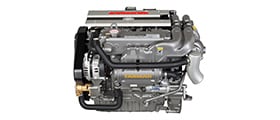 Recreational Marine
Recreational Marine
 Recreational Boat
Recreational Boat
 Premium Cruiser
Premium Cruiser
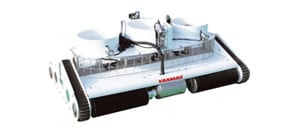 Marine Equipment
Marine Equipment
 Marine Commercial
Marine Commercial
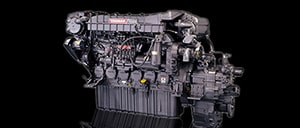 Propulsion Engines (High Speed)
Propulsion Engines (High Speed)
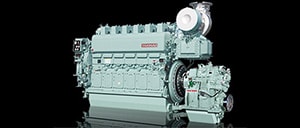 Propulsion Engines (Medium Speed)
Propulsion Engines (Medium Speed)
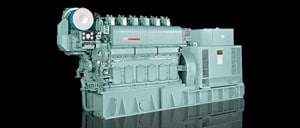 Auxiliary Engines
Auxiliary Engines
 SCR System
SCR System
 Dual Fuel Engine
Dual Fuel Engine
 Two-stage Turbocharging System
Two-stage Turbocharging System
 Electric Propulsion System
Electric Propulsion System
 Energy Systems
Energy Systems
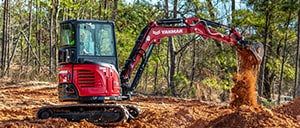 Compact Equipment
Compact Equipment
 Industrial Engine
Industrial Engine
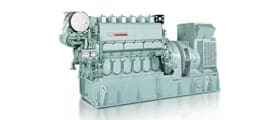 Power Generation
Power Generation
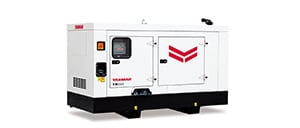 Compact Power Products
Compact Power Products